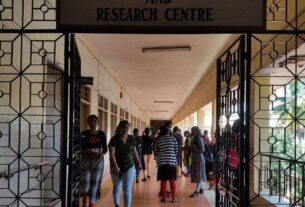The palace is not disability-friendly despite a law to make all public spaces accessible to disabled persons.
The Bangalore Palace does not have basic disability-friendly infrastructure. There are no visual panels, guides, ramps, wheelchair tracks, signage, or lifts. The only special provision for persons with disability is entry free of cost. Therefore, it is in violation of Rights of Persons with Disabilities Act passed by the Lok Sabha in 2016 which states that all public spaces must be disability-friendly
“The basic facilities should be a ramp with supportive railing, identified important places like halls or toilets for the visually impaired, sign-language indicators. And if it is a duplex, it should have a lift or other arrangements for access,” said Mr. Ranganatha, Training Coordinator with the Action on Disability and Development India. He said that entrances and exits should be made wide so wheelchairs or such other equipment are not hindered. Helpers and first aid should also be available on the grounds. Mr. Ranganatha said that among other facilities, Braille script for the blind should also be made customary.

Prof. Supreo Chanda, Board Member of an International Committee for Museology, who is a wheelchair-user said, “Firstly, the facilities need to be accessible to all. Exclusively for disability is wrong because it segregates the disabled which is a violation of human rights.” He added that the notion that making heritage buildings disability-friendly is difficult is also wrong, “If you look at the Titti Palace in Florence or even the Charles University in Prague, they are all old heritage buildings but are disability-friendly. Mysore Palace did not have electricity before, but now they do. It’s just a mental block people have.”
Prof. Chanda emphasized the need for sensitizing Indians on the issue of disability, “It’s easy. Just no one will do it. The heritage sites in Delhi were not made disability-friendly until Stephen Hawking’s visit in 2001.” He also said several of these facilities do not cost much. “The foldable ramps in German buses, for example. Not all facilities are expensive and difficult, just no one will do it here.”

An official of the Bangalore Palace management team said that it lacks disability-friendly infrastructure due to the lack of funds. “We get nothing from them [the government]…it’s only the sale of the tickets.” He said that “The royal family is reluctant to hand over any part of the palace to the government and therefore, are unable to get any government subsidies.” He said that in 2005, Sri Srikantadatta Narasimharaja Wadiyar, the then owner of the Bangalore Palace made it a public space for tourists. However, Post-COVID-19 it has seen a boom of around 3,000 to 4,000 tourists daily, especially on weekends. Audio guides are available free of cost which describe the history of the Palace and the Wadiyars (the royal family).
The official said that the Bangalore Palace (Acquisition and Transfer) Act of 1996 was an initiative by the Karnataka Government to bring the palace under its own jurisdiction as a heritage and conservation site. However, the Mysore Royal Family has fought the legalities of this Act. An official in the Karnataka Department of Tourism confirmed the dispute over the ownership of the Palace continues in the Karnataka High Court to this day. Therefore, it does not belong to the State Government, and is still entirely managed privately by the Wadiyars.

The palace, situated on 400 acres, was built in 1878 for the Mysore Royal Family. After Independence, the then Maharaja Jayachamarajendra Wadiyar, joined the Dominion of India and ceded his kingdom. However, the Bangalore Palace continued to serve as the family’s secondary residence until they moved permanently to the Mysore Palace. Currently, the owner of the palace is H H Pramoda Devi Wadiyar who resides in the private quarters of the Mysore Palace in Mysore and oversees some of the functioning of the Bangalore Palace.
A 2021 statistical profile by the Government of India on Persons with Disabilities (Divyangjan) in India which cites the 2011 census notes that 2.21 percent of India’s total population is disabled. The report further mentions that among the disability reported, 20 percent are impaired in movement, 19 percent suffer from visual impairment, 19 percent have hearing impairments, and seven percent are disabled in speech. In total, there are 26.8 million disabled persons in India for whom accessibility to most public spaces, such as tourist spots like the Bangalore Palace, are difficult.





Amazing article. Importance of having disability friendly tourist places.
Pretty amazing coverage and research is also in very deep aspects. Loved the work
The Bangalore Palace is so poorly managed, even as a museum, this had to have been coming. When I visited, I was shocked at the cost of the ticket and how apathetic they were toward the elderly too. The whole thing has become only about earning money.
Good read. Disability friendly tourist places is something government of India should take action on.
Good, you did a good work. this may help the policy makers and the concern authorities can take step to make the heritage place disable friendly.